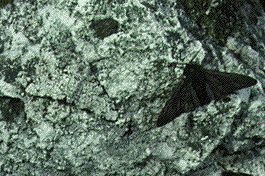Adaptive explanation - Is it always appropriate to describe characters as adaptations?

Flying fish are not adapted to obey the law of gravity.
When evolutionary biologists seek to understand how a character is adaptive, they consider the likely reproductive success of mutant, altered forms of the character. We can imagine many changes in the shape of the flying fish; but none of them will prevent it from returning to the sea. Even though returning to the sea is a 'biological necessity', there has not been any selection in the past between some types of fish that did return to the sea and some types that did not, with the former surviving and reproducing better.
Two points can be made:
• A thought experiment about alternative forms of a character is only sensible if the alternatives are plausible. Fish that disobey gravity are not. Imagining alternative forms of a character is not absurd, but it can be taken to absurd extremes. In real cases, the alternatives are usually plausible and may even be known to exist. There is nothing absurd in postulating a melanic form of the peppered moth (pictured opposite), because it can be seen in nature; and it is reasonable to consider how natural selection would act on an asexual mutant of a sexual species, because asexual forms are known in many taxa.
• Not all the beneficial consequences of a character are properly called adaptations. A character is an adaptation in so far as natural selection is maintaining its form in modern populations and (on the narrower definition) originally brought it into existence. Beneficial consequences that are independent of natural selection are not adaptations.
| Next |



